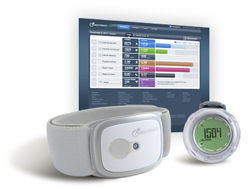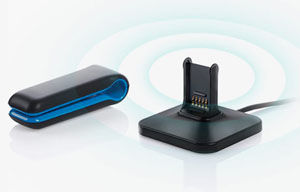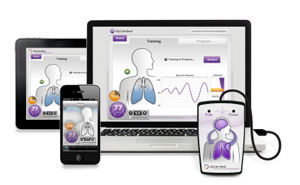With so many body-monitoring devices being plugged on your favorite TV shows and advertised online and in stores, it’s often hard to choose the right one for you and your clients. Some calculate distance and the number of calories you burn throughout the day, while others come with smartphone applications or are equipped with GPS and Bluetooth®.
The options can seem overwhelming, but don’t let that stop you from integrating technology into your fitness journey or advising your clients when they ask questions.
Check out some of the top choices by ACE Fit Expert Jonathan Ross, and the pros and cons of each:
BodyMedia FIT Armbands ($99)
(Note: BodyBugg is a BodyMedia technology packaged for private labeling by 24-Hour Fitness)

BodyMedia FIT tracks everything from the number of calories burned to the food you’ve consumed and the quality and quantity of your sleep. All three armband models—the Advantage ($99), LINK ($149) and CORE ($179)—are worn on the upper arm.
PROS:
- The device is worn on the upper arm, close to center of the body and stays secure during clothing changes
- Measures skin temperature, galvanic skin response (sweat) and heat generated for accurate measures of calorie expenditure
- LINK model features Bluetooth pairing with a smartphone app to access data in real-time (phone app can still view data after syncing with any of the armbands—the Bluetooth feature on LINK model allows wireless syncing)
- CORE model is significantly smaller than the other two models
- If the trainer also uses an armband, BodyMedia’s ProConnect software allows him or her to access the Activity Manager data to see how the client has been doing outside training sessions
CONS:
- After the included three-month trial period, access to online Activity Manager requires a monthly subscription fee of $6.95
- No heart-rate monitor (other methods of measuring activity make this less important)
FitBit Ultra ($99.95)

The FitBit Ultra allows you to track the number of steps you take using a clip-on device that includes an altimeter to measure the distance climbed on stairs or while walking or hiking.
PROS:
- Features an on-device display
- Includes an altimeter
- Worn on or near waist
CONS:
- Clips to clothing, not the body
- Potentially easier to lose (although the clip is very secure)
- Must be worn on a separate wristband to measure sleep
Nike+ SportBand / FuelBand ($59

The Nike+ SportBand ($59) is geared more toward running than a wide range of fitness activities. The company’s wristband model, the Nike+ FuelBand ($149), is the option you’d most likely consider for body monitoring.
PROS:
- Features a string of small lights on the wristband that change from red to green as you progress toward your daily goal
- Bluetooth pairing with a smartphone app enables access to data in real-time through wireless syncing
CONS:
- Estimates, rather than measures, the number of calories burned
- Device is worn on the wrist rather than closer to center of the body
Adidas miCoach Pacer ($140)

In addition to monitoring heart rate and calories burned like many other devices do, the Adidas miCoach Pacer provides you with your own “coach” and the option to create custom workouts and training plans.
PROS:
- Tracks pace, distance, heart rate and calories burned while running, and provides audible coaching through the users digital media player
- Integrates run speed with heart-rate monitoring for detailed insight into workout intensity
CONS:
- Device is limited to just running; it is not an all-activity monitor
Involves the use of 3 devices – armband, chest-strap heart-rate monitor and clip-on shoe sensor
My Calm Beat Monitor ($79.95)

If reducing stress is a primary goal, the My Calm Beat monitor may be a good choice. Unlike the other monitors previously described, this device is used exclusively for testing and training for optimal breathing to promote calmness and focus. It does not track calories burned or distance covered.
PROS:
- Helps find optimal breathing rate by accurately measuring the heart’s response to different rates of breathing
- Records training sessions, allowing user to measure improvement over time
CONS:
- Expensive for somewhat limited functionality
- Can be a bit tricky initially to find the right spot to clip the monitor onto one’s ear
Learn more about integrating technology—specifically body-monitoring devices—to improve your connection with clients at our webinar on July 25, 2012, at 11 a.m PST. Sign up for “Fitness Tech to Boost Your Business: Body Monitoring Devices & More” today at ACEfitness.org/ContinuingEducation.